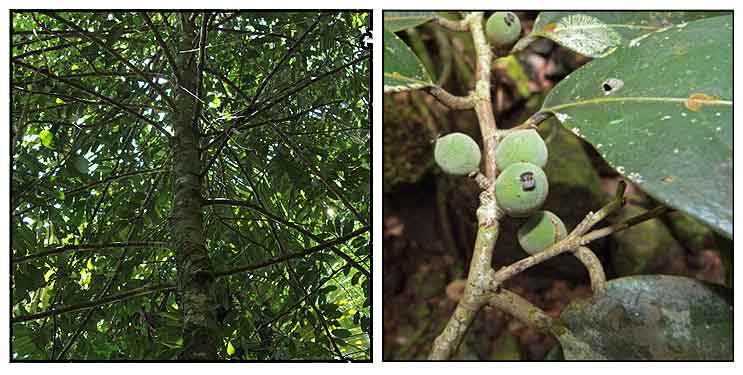
Family • Putranjivaceae
Balikbikan
Drypetes longifolia (Blume) Pax & K.Hoffm.
ODOPON PUTEH
| Scientific names | Common names |
| Aporosa calocarpa Kurz ex Hook.f. | Balikbikan (Tagalog) |
| Cyclostemon bordenii Merr. | |
| Cyclostemon calocarpus Hook.f. | |
| Cyclostemon coruaceus Baill. ex Müll.Arg. | |
| Cyclostemon incarnatus Elmer | |
| Cyclostemon calocarpus Hook.f. | |
| Cyclostemon longifolius Blume | |
| Cyclostemon macrophyllus Blume | |
| Cyclostemon macrophyllus var. malaccensis Hook.f. | |
| Cyclostemon merrittii Elmer | |
| Cyclostemon zeylanicus (Thwaites) Baill. | |
| Drypetes bordenii (Merr.) Pax & K.Hoff. | |
| Drypetes calocarpa (Hook.f.) Pax & K.Hoff. | |
| Drypetes coriacea (Baill. ex Müll.Arg.) Pax & K.Hoff. | |
| Drypetes longifolia (Blume) Pax & K.Hoff. | |
| Drypetes macrophylla (Blume) Pax & K.Hoff. | |
| Drypetes myrmecophila Merr. | |
| Sphragidia zeylanica Thwaites | |
| Drypetes longifolia is an accepted species. KEW: Plants of the World Online | |
| Other vernacular names |
| BORNEO: Kike daun besar, Maklawi, Mintulang. |
| INDONESIAN: Ki sa'at, Buniyaga, Batung, Kikir daun besar. |
| MALAYSIAN: Opodon putih. |
February 2024
![]()
 |
| PHOTOS / ILLUSTRATIONS |
| IMAGE SOURCE: Putranjivaceae : Drypetes longifolia / Leaves / Copyright © 2011 by Leonardo L Co [ref. DOL26718] / Non-Commercial Use / Image modified / Click on image or link to go to source page / Phytoimages.siu.edu |
| IMAGE SOURCE: Putranjivaceae : Drypetes longifolia / Close-up of developing fruits / CC BY NC-ND / Martin W Callmander / Image modified / Click on image or link to go to source page / Useful Tropical Plants |
| IMAGE SOURCE: Putranjivaceae : Drypetes longifolia tree / CC BY-SA 3.0 Unported / R Rahasia / Image modified / Click on image or link to go to source page / Wikimedia Commons |
Additional
Sources and Suggested Readings |
• |
DOI: It is not uncommon for links on studies/sources to change. Copying and pasting the information on the search window or using the DOI (if available) will often redirect to the new link page. (Citing and Using a (DOI) Digital Object Identifier) |
| List of Understudied Philippine Medicinal Plants |
| New plant names needed The compilation now numbers over 1,300 medicinal plants. While I believe there are hundreds more that can be added to the collection, they are becoming more difficult to find. If you have a plant to suggest for inclusion, native or introduced, please email the info: scientific name (most helpful), local plant name (if known), any known folkloric medicinal use, and, if possible, a photo. Your help will be greatly appreciated. |
• |
 |



